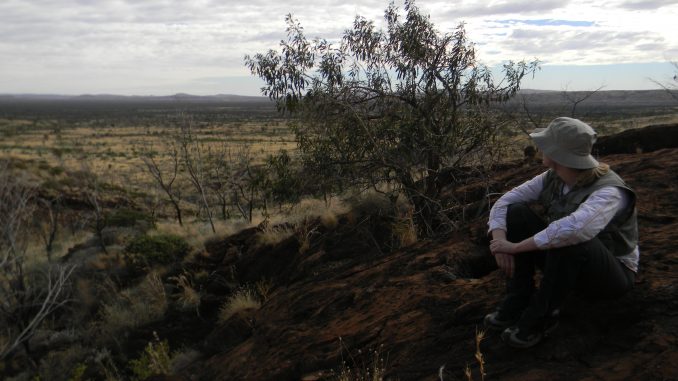
Professor Alexandra Davatzes recently published her findings discussing a rock she discovered on a 2003 trip to South Africa that showed evidence of plate tectonics predating previous similar discoveries by millions of years.
An assistant professor in the earth and environmental sciences department, Davatzes came to Temple in 2008 and studies astrobiology, the study of the origin of life in the universe.
Davatzes’ published research, titled “Paleoarchean ocean crust and mantle excavated by meteor impact: Insight into early crustal processes and tectonics,” was featured in the July 2014 edition of Geology, a science journal.
“Everything we know about [the subject] is from such a limited data set,” Davatzes said. “We are piecing together what life was like 3.5 billion years ago.”
Davatzes splits her time between teaching during the academic year and traveling to South Africa and Australia – two places known to have the oldest preserved rocks available on Earth.
“Earlier work says the oxygen level in the atmosphere was incredibly low,” Davatzes said. “We would not be able to survive.”
Davatzes knew what she was looking for nine years ago in South Africa when she found the rock that spurred interest in her research on ocean crust and plate tectonics.
It wasn’t until 2012, however, that Davatzes applied a geochemical analysis used on one of her more recent finds to the rock she brought back in 2003.
Davatzes said that she was surprised to find that the rock models were very simple and the rock was very much like our modern oceanic rock. With this information, Davatzes and her team were able to conclude that plate tectonics must have been active at the time of the rock’s origin.
Information about this rock clues researchers, like Davatzes, to the role plate tectonics played in the formation of the earth’s surface as it is today, and for the future, as these elements are critical for human life to remain.
Davatzes explained that studying the Earth’s rocks and other parts of the universe – especially Mars – is like examining how a human is the sum of their life experiences.
Davatzes said she believes that knowledge of how other planets and their surfaces have evolved over time might help scientists predict Earth’s evolution.
“I’m interested in how we think and know how the Earth has grown and what that will tell us about the future,” Davatzes said.
Scientists started collecting research about plate tectonics in the mid-1900s, leaving a vast amount of information literally at the bottom of the ocean.
“Trying to piece together information about 3.5 billion years ago is challenging, but that’s what makes it fun,” Davatzes said.
Paige Gross can be reached at paige.gross1@temple.edu and on twitter @By_paigegross


Be the first to comment